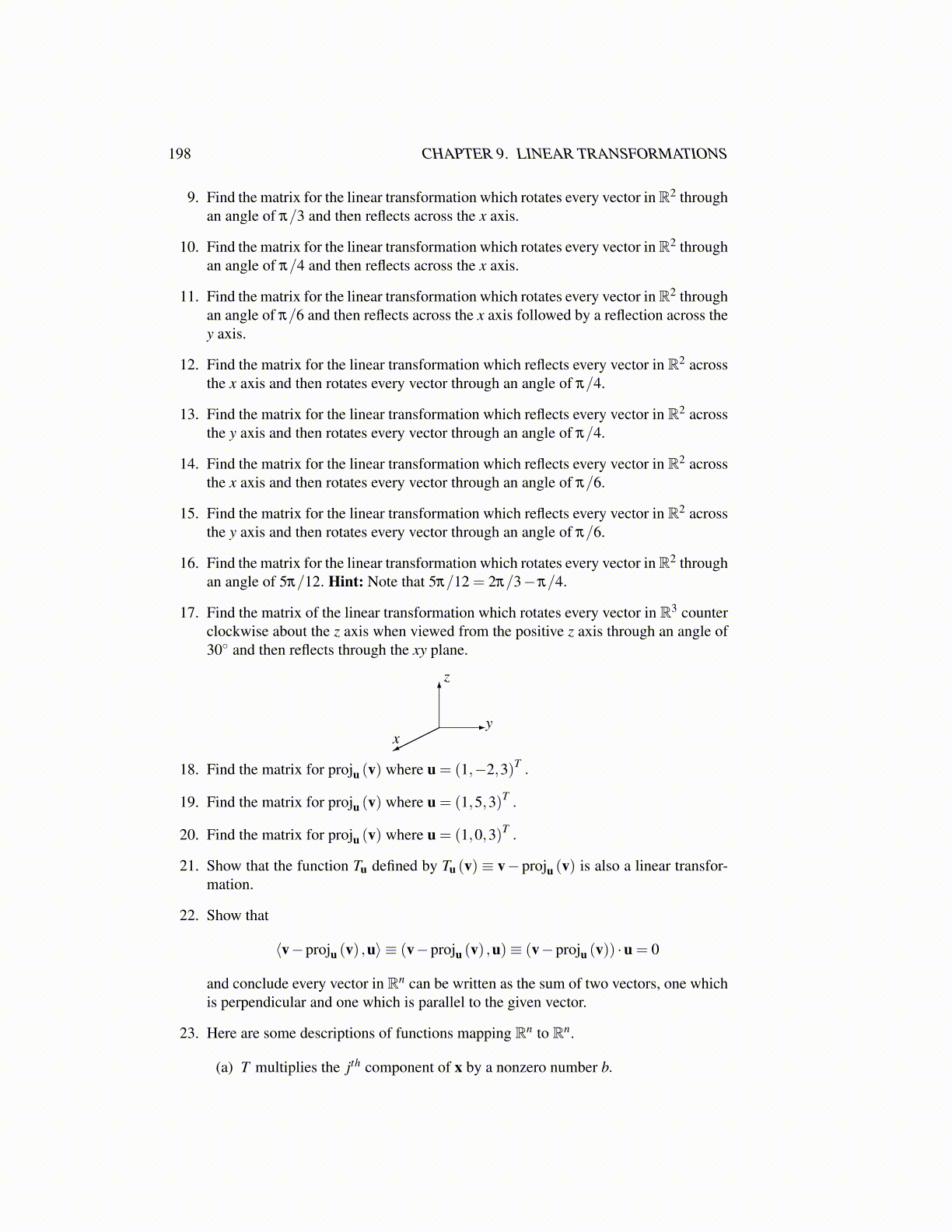
198 CHAPTER 9. LINEAR TRANSFORMATIONS
9. Find the matrix for the linear transformation which rotates every vector in R2 throughan angle of π/3 and then reflects across the x axis.
10. Find the matrix for the linear transformation which rotates every vector in R2 throughan angle of π/4 and then reflects across the x axis.
11. Find the matrix for the linear transformation which rotates every vector in R2 throughan angle of π/6 and then reflects across the x axis followed by a reflection across they axis.
12. Find the matrix for the linear transformation which reflects every vector in R2 acrossthe x axis and then rotates every vector through an angle of π/4.
13. Find the matrix for the linear transformation which reflects every vector in R2 acrossthe y axis and then rotates every vector through an angle of π/4.
14. Find the matrix for the linear transformation which reflects every vector in R2 acrossthe x axis and then rotates every vector through an angle of π/6.
15. Find the matrix for the linear transformation which reflects every vector in R2 acrossthe y axis and then rotates every vector through an angle of π/6.
16. Find the matrix for the linear transformation which rotates every vector in R2 throughan angle of 5π/12. Hint: Note that 5π/12 = 2π/3−π/4.
17. Find the matrix of the linear transformation which rotates every vector in R3 counterclockwise about the z axis when viewed from the positive z axis through an angle of30◦ and then reflects through the xy plane.
xy
z
18. Find the matrix for proju (v) where u = (1,−2,3)T .
19. Find the matrix for proju (v) where u = (1,5,3)T .
20. Find the matrix for proju (v) where u = (1,0,3)T .
21. Show that the function Tu defined by Tu (v) ≡ v− proju (v) is also a linear transfor-mation.
22. Show that
⟨v−proju (v) ,u⟩ ≡ (v−proju (v) ,u)≡ (v−proju (v)) ·u = 0
and conclude every vector in Rn can be written as the sum of two vectors, one whichis perpendicular and one which is parallel to the given vector.
23. Here are some descriptions of functions mapping Rn to Rn.
(a) T multiplies the jth component of x by a nonzero number b.